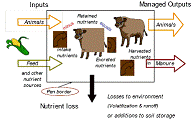Biological Systems Engineering, Department of

Department of Agricultural and Biological Systems Engineering: Presentations and White Papers
Date of this Version
2009
Document Type
Article
Abstract
Recently safety of microwave cooked food has come under scrutiny because of recent outbreak and recalls associated with some of these not-ready-to-eat (NRTE) frozen foods. Heating uniformity of these foods is paramount in rendering the foods safe for consumption. Degree of uneven microwave heating is influenced by both microwave oven and characteristics of food load which decides the electric field distribution within the food load. Given the complexity of parameters, a computer model is always desirable to optimize heating uniformity by proper selection of food shape, proportions, plating, packaging selection and more. Earlier many researchers have made one or more assumptions in computer model development to simplify the problem and to minimize the computational time. The main objective is to develop a holistic microwave cooking model to capture all real scenarios. Using this model, we studied the effect of microwave oven parameters as well as food load parameters.
Coupled heat transfer and EM equations were solved using QWED software interfaced with Fluent software. The model was validated using 1% gellan gel temperature profile obtained by using Infrared imaging camera (SC640 FLIR) and Fiber optic sensor in both stationary and rotating turntable MW heating situation. The gellan gel as model food was useful in validating temperature profile accurately as it is possible to cut thin slices for temperature mapping of each slice. The predicted temperature profile for each layer was found to be in good agreement qualitatively and quantitatively with experimental profile. Preliminary results have hinted that irrespective of changing any parameters, non-uniform heating will remain an issue to deal with. This study increased our understanding of MW heating/cooking of heterogeneous food products and helped to optimize food parameters.


Comments
2009 TECHNICAL SESSION PROCEEDINGS
International Microwave Power Institute’s 43rd Annual Symposium
WASHINGTON, D.C., JULY 8-10, 2009